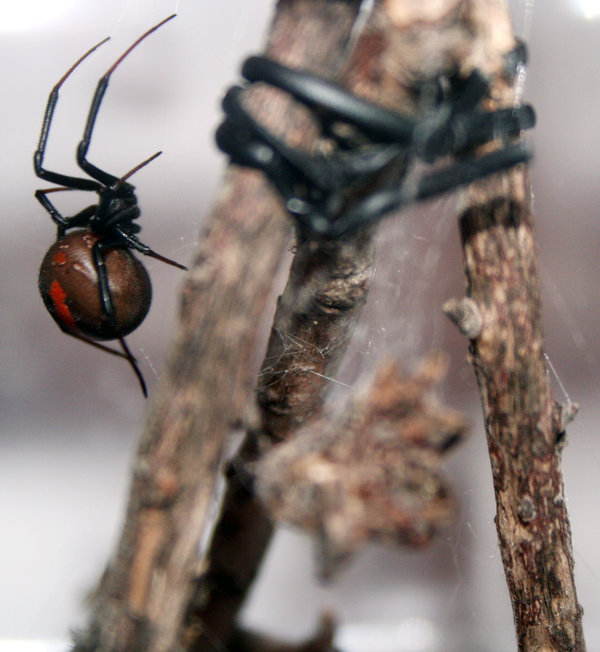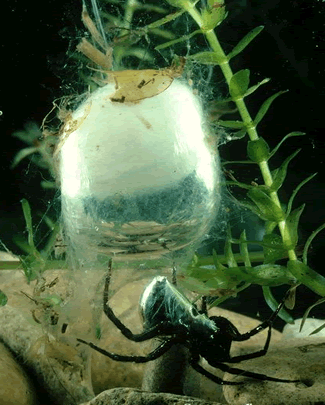Sexual Cannibalism in Spiders
Dani Cardia and Charles Morse
Biology 342 Fall 08
Theory 3: Male Complicity
Mechanism: In the red back spider, post copulatory cannibalism is a genetically inherited stereotypic behavior. During copulation, the male rotates 180 degrees so that his abdomen comes to rest directly above the mandibles of the female. This behavior was shown to be inheritable and stereotypic due to the fact that males rotate even when females do not exhibit cannibalistic behavior, and rotated when paired with females of different species (Foster 1992). Cannibalism occurs in %65 of matings in this species (Andrade 1998). In the redback spider, attempts at cannibalism may be made during the first palpal insertion of the male, but they are rarely fatal. The majority of males return to the web, and resume courtship. Further wounding and digestion does not seem to impair the male's courtship, and he is typically cannibalized after the second insertion (Andrade 1998). Such behavior is also indicative of the female choice hypothesis, in regards to her control of timed cannibalization.
Australian redback spider, Latrodectus hasselti. Image courtesy of Miccobab's Photo Journal. Adaptive Value: This model can only occur in the case of post copulatory cannibalism, and is more likely to occur when a male’s number of possible matings is low and other food sources are unavailable, such that the male has little to lose and the cannibalism will be a great nutritional boon to the female carrying his progeny. The hypothesis has makes two assumptions: males have a low probablity of remating, and their cannibalization significantly increases the number or quality of their offspring (Buskirk 1984). There is a strong adaptive value for males that submit to cannibalism, as they are able to copulate longer. In the case of the red backed spider, males that are eaten showed to have twice the number of eggs fertilized as opposed to males who survived copulation (Foster 1992). Males that are eaten may take up more time with the female and subsequently block other males from mating with her, though evidence of this blocking behavior is anecdotal and the reasoning for it inductive. Nutritional benefit is minimal in that the male is 2% the size of the female. In this case, mating is fatal to males, so there is high adaptive value in being eaten, as he will die anyway. Ontogeny: In the case of the red backed spider, the only species that has been shown to adhere to this model, males are 2% the size of females. Females do not have any method of determining what sperm will fertilize her eggs in this model. This suggests that the male's ability to be eaten by the female has a great influence on his reproductive fitness because the female will not eat him and later decide to use another male's sperm.
Water spider Argyroneta aquatica spinning its underwater air bell. Image courtesy of Arkive. The water spider A. aquatica is the only spider to spend all its life under water and one of the only acounts of reversed sexual cannibalsim (Shutz & Taborsky 2005). Sexual size dimorphism is reversed in this species: male spiders are larger than their conspecifics. This reversal of the SSD is attributed to the necessary mobility of males. Typically it is a greater cost to be larger (as in the case of M. vatia), but the underwater constratints favor larger males in A. aquatica. The greater the male's mass compared to his mate, the higher her chance of being cannibalized, yet female's choose larger males as their prefered mates (Schutz & Taborsky 2005).
|

